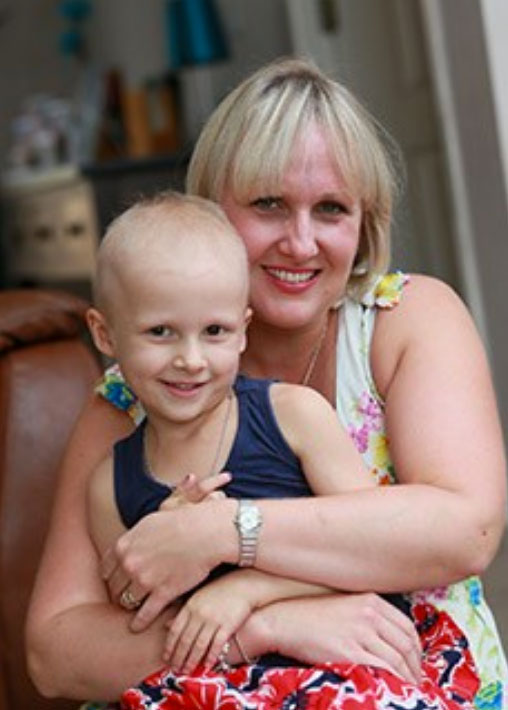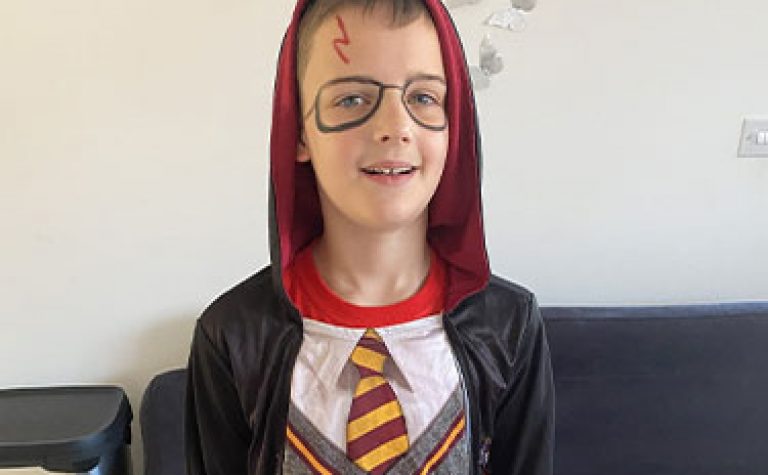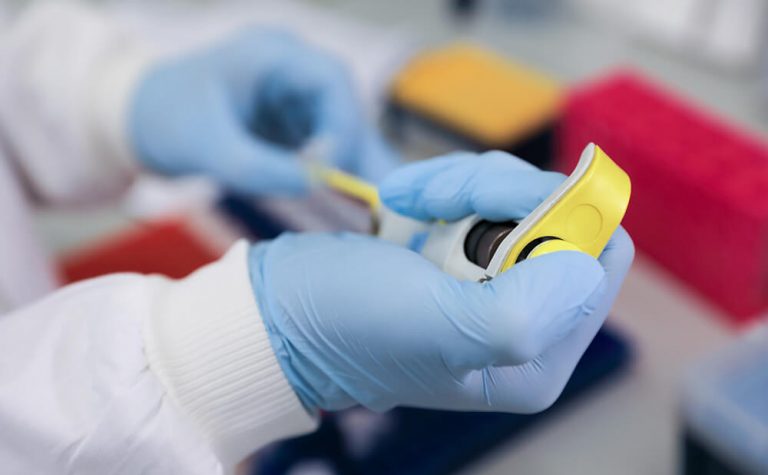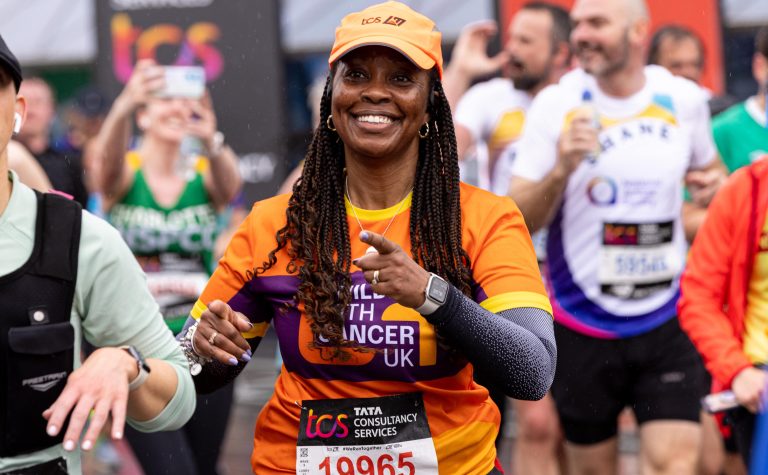What is Wilms' tumour?
Primarily viewed as a type of kidney cancer, Wilms’ tumour is a type of embryonal tumour, developing from the immature cells from which the kidneys develop. It is thought these cells do not mature normally, instead they remain present in a child’s kidney after birth, then they start to grow out of control, forming a jumbled mass of small immature cells.
Wilms’ tumour usually only affects one kidney (unilateral) but, in rare cases, can affect both (bilateral).
Incidence
Renal tumours account for 5% of all childhood cancers in Great Britain. Nine out of ten cases (90%) are nephroblastoma (also known as Wilms’ tumour), affecting around 70 children a year in the UK.
As with other embryonal tumours, Wilms’ tumour predominantly affects children under the age of 5; the peak incidence is between 1-3 years of age.
Unilateral tumours occur equally often in boys and girls, but girls are twice as likely to be diagnosed with bilateral tumours.
Although the causes of Wilms’ tumour are unknown, some people who develop it have abnormal genes or congenital malformations. Up to one in six children diagnosed with Wilms’ tumour also have a malformation syndrome, such as WAGR syndrome, Denys-Drash syndrome or Beckwith-Weidemann syndrome – the highest proportion recorded for any childhood malignancy.
In one in 100 cases, another family member will also have Wilms’ tumour.
What are the symptoms of Wilms' Tumour?
The most common symptom of a renal tumour is a swelling in the abdomen, which is usually painless.
Sometimes there may be blood in the child’s urine, or their blood pressure may be raised. The child may also have a fever, upset stomach, weight loss or lack of appetite.
A variety of tests and investigations will need to be carried out before a renal tumour is diagnosed. Urine and blood samples will be taken to check kidney function. An abdominal ultrasound scan and CT scan are often done. Scans of the chest and liver may be taken to check for any spread of the disease.
A biopsy will be taken to provide further information about the tumour. Around five per cent of Wilms’ tumours have ‘unfavourable’ histology, characterised by ‘anaplastic’ cells that are harder to eradicate.
Staging
The ‘stage’ of a cancer is a term used to describe its size and whether it has spread beyond its original site. Knowing the particular type and the stage of the cancer helps doctors to decide on the most appropriate treatment.
A commonly used staging system for Wilms’ tumours is described below:
Stage 1 – the tumour is only affecting the kidney and has not begun to spread. It can be completely removed with surgery.
Stage 2 – the tumour has begun to spread beyond the kidney to nearby structures, but it is still possible to remove it completely with surgery.
Stage 3 – the tumour has spread beyond the kidney, either because it has burst before or during the operation, because it has spread to the lymph glands, or because it has not been completely removed by surgery.
Stage 4 – In stage 4 Wilms’ tumour, the tumour has spread (metastasized) to other parts of the body such as the lungs or liver.
Stage 5 – there are tumours in both kidneys (bilateral Wilms’ tumour).
You can learn more about kidney cancer, including Wilms’ tumour with this informative video:
Save
Save
Save
Save
Save
How is Wilms' Tumour treated?
Treatment will depend on a number of facts including the histology of the tumour (how the cells appear under the microscope) as well as the stage of the disease.
If possible the tumour will be removed by surgery, either at diagnosis or following a course of chemotherapy to shrink the tumour. Sometimes radiotherapy may be used to shrink the tumour.
Surgery usually involves removing the whole kidney (nephrectomy) but occasionally only part of the kidney needs to be removed (partial nephrectomy). Examination of the excised tumour will provide doctors with further information about the nature of the tumour and will determine what further treatment is required.
Most tumours are ‘standard risk’. Some are ‘low risk’ and require less additional treatment than the standard risk tumours. Two types of Wilms’ tumour – anaplastic and blastemal – are ‘high risk’ and require more intensive treatment.
Chemotherapy is usually given after the surgery to reduce the risk of the cancer returning. Depending on the stage of the tumour, radiotherapy may also be used.
In children with bilateral disease, the aim of surgery is to remove as much of the cancer as possible, while leaving as much healthy kidney as possible. Chemotherapy will always be given and sometimes radiotherapy will also be used.
Are there side effects?
Treatment often causes side effects and these will be discussed with you before treatment starts.
The possible side effects of chemotherapy depend upon the drugs used but may include:
- nausea and vomiting
- hair loss
- reduced resistance to infection
- bruising and bleeding
- tiredness
- diarrhoea
These problems are all temporary and can be minimised with good supportive care.
Follow up
The child will have regular follow-ups to check for any recurrence of the cancer and for any problems that may arise as a result of the treatment they were given (late effects).
When one kidney is removed, the other will be able to work normally and can take over the work of the other kidney. Very few children have long-term kidney problems.
A small number of children may develop adverse effects years later because of the treatment they received for a renal tumour. These include possible reduction in bone growth, infertility, problems with heart and lung function and a small increase in risk of developing another cancer. Abdominal radiation in Wilms’ tumour patients has been linked with problems in later pregnancies for girls.
If the tumour comes back after initial treatment, this is known as recurrent cancer, or relapse. Most children with renal tumours are cured. If the cancer comes back, it is usually within the first two years.
Can Wilms' tumour be cured?
Most children with Wilms’ tumour can be cured, with 92% of patients surviving to five years. This is an increase in survival rate from 2001-2005, where it was 88%
Survival is better for children with unilateral Wilms’ tumour than for those with bilateral disease.
Children with other types of renal tumour have a worse prognosis. Rhabdoid renal tumour, whilst rare, unfortunately, has few survivors. Niamh was diagnosed with Wilms tumour at the age of six. Read about her kidney cancer story and her successful treatment.
Research
Many children have their treatment as part of a clinical trial.
Trials aim to improve understanding of the best way to treat the cancer, usually by comparing the standard treatment with a new or modified version.
If appropriate, the child’s medical team will discuss participation in a relevant trial. Participation is optional but may offer the opportunity to receive new treatments.
Children with Cancer UK is funding an important project at the Institute of Child Health which could help to improve treatments for Wilms’ tumour.
Read more: Molecular evolution of Wilms’ tumour
Alice's Story
 Read Alice’s victory against Wilms’ tumour, told by her mum, Jane:
Read Alice’s victory against Wilms’ tumour, told by her mum, Jane:
In March 2014 I had noticed that Alice’s tummy seemed swollen over a few weeks, and it was larger on one side. Initially, I wasn’t overly worried as my son had had a toddler ‘pot belly’, so I thought it was that.
But then Alice started to really lose her appetite. She has always been a fussy eater but now she was going for whole days eating hardly anything, and saying she felt full after a few spoonfuls.
My husband went to the GP with Alice and at 5pm Andrew called me to say the GP had told them to go straight to QMC (Queens Medical Centre, Nottingham). He sounded really worried so I left work and dashed over to meet them.
We were sent straight to the medical assessment unit where several doctors examined Alice. I was worried but still didn’t think it would be serious. At around 10pm a consultant came to see us and delivered the devastating news – that it looked extremely likely that Alice had kidney cancer, Wilms’ tumour. At that moment our world fell apart and I could only wonder at how this could be happening when she seemed so well? I also thought of all the worst case scenarios and spent most of the night in tears.
The treatment plan would be six weeks of chemo before surgery to remove her kidney and the Wilms’ tumour. I was terrified at the prospect of all of this and the possible side effects and I got very upset at the thought of what our beautiful girl would have to go through. But we tried to remain positive and decided on a ‘one day at a time’ approach.
We knew the tumour had spread into her vein and that removing it would be tricky. Seeing her go down to the operating theatre that day was awful. But we knew we had to put our trust in the surgeons if we wanted to get her better. After the longest six hours of my life she was back and the operation to remove her Wilms’ tumour and kidney was a success.
After surgery Alice had nine sessions of radiotherapy and six more months of weekly chemo to ensure the cancer was completely eradicated. We were very lucky that she has only been admitted to hospital a few times so we have been able to be mostly at home. This allowed Alice to start full-time school in September, which she loves!
If you’ve been touched by Alice’s journey, help us invest in the high quality research that really matters which would otherwise go unfunded, helping to support children with cancer so they can be with their families for longer.


